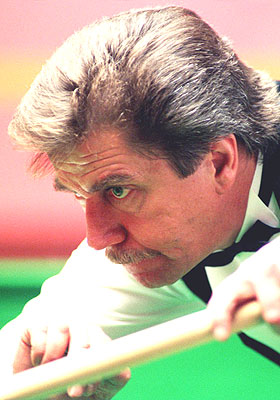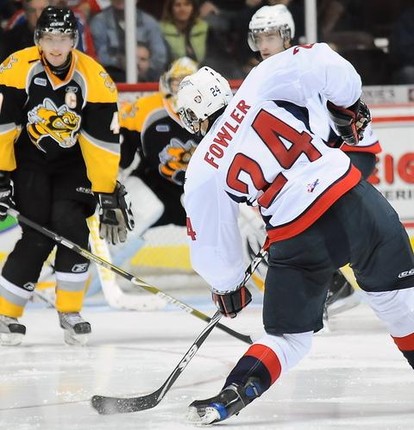It’s time for a Women’s National Hockey League
 During the final day of the World Hockey Summit it became abundantly clear that Hockey Canada, USA Hockey and especially the National Hockey League need to become more proactive in the growth of women’s hockey.
During the final day of the World Hockey Summit it became abundantly clear that Hockey Canada, USA Hockey and especially the National Hockey League need to become more proactive in the growth of women’s hockey.
It’s something that has been at the back of my mind since the Winter Olympics in Vancouver last February – how can an exciting game like women’s hockey only really be seen on TV every four years? What can be done?
Outside of the collegiate game in the United States and Canada there is no forum for elite women’s hockey. Even at the amateur level there are many municipalities that don’t have leagues for female players, and at the World Hockey Summit there were stories of towns that won’t let women use the arenas, period.
Further, there is no junior hockey for ladies - although women are allowed to play in the three leagues that comprise the Canadian Hockey League.
At the professional level there have been several attempts at running leagues, including the Canadian Women’s Hockey League that has teams in Montreal, Mississauga, Burlington, Brampton, Vaughn and Ottawa.
The CWHL competes for the Clarkson Cup against teams from the Western Women’s Hockey League. The WWHL has franchises in Calgary, Edmonton, Winnipeg, Strathmore and Minnesota.
Although I admire these leagues ambitions, they’re unstable with teams folding or relocating constantly. Other leagues like them have collapsed under the financial and administrative strains of running a professional association.
This is where the NHL needs to step in, and form a WNHL, much like the National Basketball Association’s WNBA, to market and promote a high-calibre female version of hockey.
Like the WNBA model, all the teams could be owned by the NHL or its franchises at first, and as they become more solvent be sold to third parties. Every team would be associated with an NHL or American Hockey League franchise to guarantee cheaper access to facilities and to enable cross promotion.
It would be an easy sell to have a NHL/WNHL double-bill in several traditional hockey markets like the Original Six, in the six Canadian NHL cities and a few other hotbeds like Minneapolis.
Further, when I threw it out to my Twitter followers last week, reader @katylalonde pointed out that there are several locations begging for hockey like Winnipeg, Kitchener, Hamilton and Quebec City. It would be a smart move for all four municipalities to invite a WNHL franchise to their rinks and prove that their arenas are viable venues for professional hockey.
Of course, such an initiative would have to be supported at the amateur level. Hockey Canada, USA Hockey and regional associations would need to do more to promote the women’s game at the amateur level. But with professionals serving as role models, it shouldn’t be too hard.
This is the kind of program that is prime for implementation - all it would takes is a motivated NHL willing to capture the interest of a whole new market of hockey fans.
World Hockey Summit: Day 2
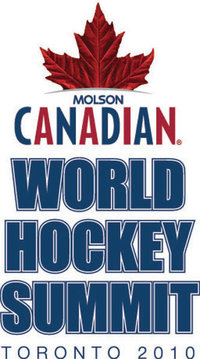 After nine hours of panels, group work, questions and answer periods as well as informal discussions over food, one thing is clear at the 2010 World Hockey Summit: the amateur hockey system has to change.
After nine hours of panels, group work, questions and answer periods as well as informal discussions over food, one thing is clear at the 2010 World Hockey Summit: the amateur hockey system has to change.
Whether it was cautions from Dr. Steve Norris or Dr. Mark Aubry on the overly demanding training in youth hockey during the morning’s Player Skills Development session or the dire warnings of Czech National Program Director Slavomir Lerner of the talent drain from Europe to North America, it was plain as day that things need to change.
Although it’s difficult to sum up nearly six hours of presentations, the general consensus was that minor hockey associations are too focused on turning young players into National Hockey League superstars, sapping the game of its fun and making it excessively dangerous.
As panellist Brendan Shanahan said “How come I don’t hear about kids playing shinny anymore?”
The speakers spoke of multiple concussions to eight and ten year-olds, massive dropout rates in children’s hockey (44% of American hockey players have stopped playing by the age of nine) and a dwindling European junior system robbed of its best talent by the superior Canadian Hockey League.
During question and answer periods as well as in break-out discussion groups the delegates and officials in attendance at the WHS brainstormed ideas that could make amateur hockey fun again for the casual player, while creating a more practical Long Term Athlete Development plan for adolescents and teenagers who want to become professionals.
The idea that was most popular – garnering a round of applause from the Air Canada Centre’s floor when it was suggested – was raising draft eligibility from 18 to 19.
Many groups of delegates had come up with similar concepts including raising the draft age to 20 or forcing players to stay in midget for a minimum of two years and junior for three. A freeze on all international movement at the junior level was also a common theme.
One radical suggestion was to raise draft eligibility to 19, but allow NHL teams to take 18-year-old players at the cost of two draft picks. So a Sidney Crosby-type player would have cost the Pittsburgh Penguins their first and second-round draft picks.
It was an informative and exciting day of hockey talks, and I’d strongly recommend that you follow the above links to see video of the panel discussions. Also, if you want up-to-date quotes from the day’s events follow me on Twitter.
Today’s discussions will start with an evaluation of hockey’s role at the 2010 Vancouver Olympics, then a Q and A with NHL commissioner Gary Bettman and then finish off with an afternoon session on Establishing a Long-Term Global Event Agenda.
World Hockey Summit: Day 1
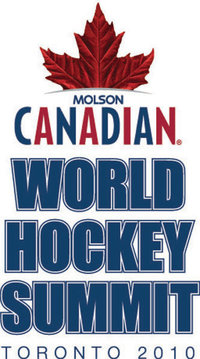 As I mentioned on my Twitter feed, I will be attending the 2010 World Hockey Summit this week, with lots of LiveTweeting on my feed and daily blog posts summarizing what I’ve learned.
As I mentioned on my Twitter feed, I will be attending the 2010 World Hockey Summit this week, with lots of LiveTweeting on my feed and daily blog posts summarizing what I’ve learned.
Hockey Canada is organizing the conference, bringing together hockey organizers, players and coaches from around the world to discuss the future of the game and improve on safety.
In the words of Hockey Canada President Bob Nicholson, the Summit will “provide an inclusive forum to table the most pressing questions surrounding our game and work together to find implementable solutions.”
Day 1 was very straightforward. It was basically clear from nine until five, giving all the attendees a chance to register and settle into their accommodations in downtown Toronto.
Tonight there will be a Hot Stove Session at the Hockey Hall of Fame where four panels rotate from room to room, discussing Contracts and Transfers, Agents’ Role in Working with Young Players, State of the Game and Comparisons of the International and North American Game.
Unfortunately, I’ve got previous commitments for tonight, so I’ll be missing out on those talks. They do sound very interesting though, and I’ll try to get my hands on a recap of the discussions to share here.
Tomorrow will start with a continental breakfast at the Air Canada Centre, home of the Toronto Maple Leafs and the National Hockey League’s Canadian office. There’ll then be a three hour session on Player Skills Development.
At one in the afternoon, Rene Fasel, the President of the International Ice Hockey Federation, is going to have a half-hour Q+A period.
Next up is the session that I am most interested in: Junior Development in the Hockey World. The reason is fairly obvious – as junior hockey editorial assistant for the Canadian Press, this is my wheelhouse.
It’s going to be a lot of fun and interesting week. Please, check back here tomorrow night or my Twitter feed throughout the day to see what it’s all about.
My latest for Hockey Prime Time
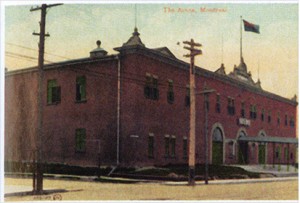
Recognize this place? It's one of my top 10 arenas in NHL history. Hover your cursor over the picture for the answer.
As long-time readers of this blog know, I’m involved with a hockey website called HockeyPrimeTime.com. It’s a great site that offers up news and analysis of the National Hockey League as well as hockey around the world.
Normally I’d be writing some notebooks on the comings and goings of the NHL’s Northeast division.
However, since there’s no hockey on right now we’ve been putting together a series of Top 10 lists. I’ve contributed two articles to the project and I’m really proud of both of them.
Most recent was my list of the Top 10 Arenas in Hockey History. A few recent rinks that made the list are Toronto’s Air Canada Centre, Detroit’s Joe Louis Arena and Philadelphia’s Spectrum.
My other Top 10 list was posted about a week ago and breaks down the Top 10 Most Influential Individuals in NHL history. I had a blast writing it. Like my work with Canada’s Sports Hall of Fame I got to combine my interest in history with my love of hockey.
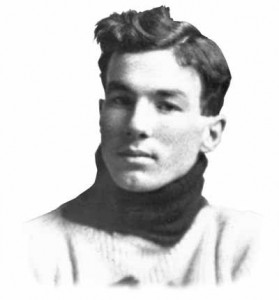
Recognize this guy? He's #9 on my list of the most influential people in NHL history. Hover your cursor over the picture for his name.
I think my list of ten influential people will surprise some people and hopefully it’ll also introduce people to some players and builders who don’t get enough credit for shaping the modern NHL. I also feel that some people will be surprised at who is at the top of the list as the most influential man in NHL history.
In any event, it was a lot of fun putting these lists together.
What do you think the most significant hockey arenas are in hockey history?
What about influential people? Do you think I missed anyone?
Back to the blogging!
 It’s been weeks since I last posted on ye olde blogge, thanks largely to my ongoing involvement with the development of new content for Canada’s Sports Hall of Fame.
It’s been weeks since I last posted on ye olde blogge, thanks largely to my ongoing involvement with the development of new content for Canada’s Sports Hall of Fame.
But since I was waiting on some editorial turnaround, I decided to go on a baseball pilgrimage of the northeastern United States, touring the baseball Hall of Fame in Cooperstown, N.Y., the new Yankee Stadium and Citifield in New York City and then on to the oldest stadium in the majors, Boston’s Fenway Park.
It was at the home of the Red Sox that I proposed to my fiancé Katy, capping off an amazing vacation.
But I owe you, my readers, an apology. I was so busy planning my trip and proposal that I didn’t do my due diligence and post links to my most recent writing before leaving for the U.S. I’m sorry because I like to keep you all updated on my various projects.
Recently, I’ve been doing some pretty exciting work for HockeyPrimeTime.com, including a draft preview, a free agent preview and a notebook, all on the National Hockey League’s Northeast division.
Even worse, my holiday matched up with one of the craziest fortnights in sports history. Let’s recap with a few quick hits.
Only Japanese officials from now on – Yes, early favourite Spain did win the World Cup on Sunday. But their victory, along with the results of many other games, was tainted by terrible officiating.
What was particularly galling in the championship game was that Spanish forward Andrés Iniesta’s winning goal was made possible by an undeserved goal kick - the ball had clearly been deflected out of bounds by a Spanish defender.
By my eyes, the only consistently strong officials hailed from Japan, odd for a nation that has only recently taken to soccer. The 2010 was a huge opportunity for FIFA to expand its brand to North America, a chance that was blown by the officials.
Iroquois Nationals might not make FIL World Championship – In a completely bizarre situation, the Iroquois Nationals team is currently unable to attend the lacrosse world championship in Manchester, England later this week.
Inside Lacrosse editor-in-chief John Jiloty explains:
“The issue centers around the Nationals (a group of 42, all members of the Six Nations of the Iroquois Confederacy) traveling on their Haudenosaunee passports. For more than 20 years, they’ve traveled on these passports with no problem. But the United Kingdom will only allow them into their country if the United States will let them back in. And as of Friday, the Iroquois did not have that assurance from the U.S.”
This is totally nuts. Yes, they’re travelling on a very specialized kind of passport, but the Iroquois are all Canadian and American citizens and upstanding ones at that.
The idea that they might miss out on playing a sport they invented because they can’t return to a continent that they’re indigenous to is pure lunacy.
The Decision LeBacle – I know, I know. Everyone and their aunt has already talked about LeBron James’ one-hour ESPN special where he callously announced his move to the Miami Heat. But how can I not talk about it? It will undoubtedly become one of the turning points of sport in the past 50 years, not just because that hour of television was a public relations disaster, but because it’s going to change the face of free agency in the National Basketball Association, and probably other major league sports as well.
I’ve got a lot more to say on all these topics, but I’ll leave you on that note. Blogging on weekdays has returned! Brap-brap.
Taking Care of Business
It has been three weeks to the day since I last posted on here, and for that, I am sorry.
It just couldn't be helped though - I’ve been very busy with my continuing work at Canada’s Sports Hall of Fame. The good news is that most of my work is now done, and the final stage should be completed in about mid-July.
My work hasn’t been limited to freelancing for the Hall of Fame though. I’ve been spending the summer doing pagination for the Canadian Press, as well as a few side projects.
The first of these projects was for my friend Victor Bachmann, a professional mixed martial artist based in Edmonton. I had interviewed him years ago for a Canadian fighting magazine. Unfortunately, they never had the space for the article and its references quickly became dated.
In addition to his prizefights, Victor is a teacher at the Hayabusa Fighting Training Centre, and he needed a profile for the gym’s website. Remembering the story I’d written about him, Victor asked me to re-write it for him.
I’ve never had to re-write an article so dramatically before, but I think I really sharpened this piece up.
My other project was for HockeyPrimeTime.com, a website that covers the National Hockey League.
Their editor, J.P. Hoornstra, asked me to do a preview of the Northeast Division’s draft possibilities and I happily complied.
It was a lot of fun looking at the different needs and draft picks of the hockey teams I am most familiar with: the Boston Bruins, the Buffalo Sabres, the Montreal Canadiens, the Ottawa Senators and the Toronto Maple Leafs.
The next few weeks are all laid out for me - I’ll be doing a preview of the free agent prospects of the Northeast Division teams for HPT.com and completing my work with Canada’s Sports Hall of Fame. Fortunately, I’ll also have more time to do blog posts.
Knowledge bomb – Canadian Sports History
As I mentioned two weeks ago, my I’ve been very busy doing some freelance work for Canada’s Sports Hall of Fame. The past two weeks have been spent researching and selecting the top two or three defining moments in the lives of 96 honoured members of the Hall.
Along the way I’ve learned a lot of quirky and interesting facts about some of Canada’s greatest athletes.
Snooker master Cliff Thorburn was the first person in world championship history to record a perfect break of 147.
For those of you who’ve never played snooker: a perfect score of 147 means that he sank every cherry ball on the table and was able to follow up with the black ball (the most valuable of the coloured balls) every time. Further, he did it without his opponent ever sinking a single ball. It’s an incredible feat of strategy, foresight and skill at any level, let alone in a world championship.
Unfortunately, Thorburn went on to lose the final match of the tournament to Steve Davis, but that doesn’t diminish his accomplishment in the first round against Terry Griffiths.
Famed strongman Louis Cyr’s records are hard to verify since few were recorded and most were hyped and exaggerated by promoters. However, he definitely set a record in 1895 by lifting 4,337 pounds on his back. As impressive as that is, the story that struck me was that at the age of 18 Cyr won a strongman competition in Boston by lifting a horse off the ground.
Don’t get me wrong, no horse weighs as much as 4,337 pounds, but they do, you know, move around and squirm. Particularly if they’re uncomfortable, like if someone was picking them up off the ground. Trying to lift something as heavy as a horse while it is moving is way more impressive than a dead lift, no matter the disparity in weight.
Finally, as many hockey fans know, Henri Richard holds the record for most Stanley Cup wins as a player. His 11 championship rings is a mark that may never be passed with the salary cap-era of the National Hockey League in full effect.
What most people don’t know is that at the time of Richard’s retirement he had won more Stanley Cups than he had had birthdays. Since he was born on February 29th, 1936 – a leap year – he had only celebrated his actual birthday nine times before his retirement during the 1974-75 season.
Anyway, thought I’d just drop some knowledge. I should have time to do some more posting as the week continues.
What’s the French for “I was wrong”?
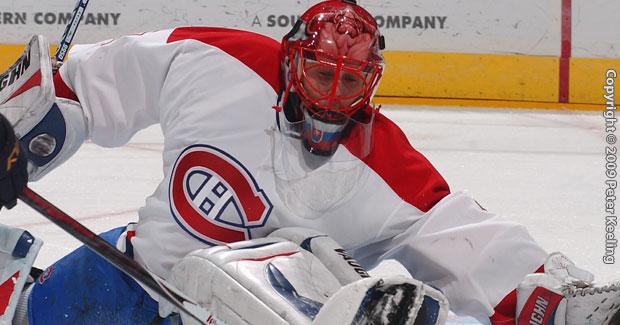 Every morning I try to come up with a new idea to blog about. Sometimes I’ve already been turning an idea over in my head for a day or two, other times I have to spend hours scouring websites and watching various sports channels to try to come up with a good idea.
Every morning I try to come up with a new idea to blog about. Sometimes I’ve already been turning an idea over in my head for a day or two, other times I have to spend hours scouring websites and watching various sports channels to try to come up with a good idea.
The challenge is coming up with an original angle, something to give my readers that is new and different. Often this means avoiding topics that the mainstream media is all over.
But how can I avoid talking about the Montreal Canadiens' incredible 2-1 Game Seven victory over the Washington Capitals last night?
I’m glad that I didn’t commit any kind of National Hockey League post-season because I would have never picked the Habs to better the Capitals. In fact, if anything, I would’ve picked top-seeded Washington to sweep Montreal right out of the playoffs.
I had figured that although the combination of Jose Theodore and Semyon Varlamov has been a shaky goalie-by-committee for the Caps all season, they were no worse than the netminder hydra of Carey Price and Jaroslav Halak.
Surely, Montreal’s pop-gun offence would’ve been no match for the Washington juggernaut. The Canadiens had no corresponding Mike Green. No Nicklas Backstrom or Alexander Semin. And Alex Ovechkin? He was several tiers above any forward the Habs have on their payroll.
Heck, months ago I claimed that general manager Bob Gainey’s sudden departure from the Habs would prove to be a distraction for the seemingly playoff-bound franchise.
Well, I’m not too proud to admit that I was wrong on all counts.
Halak, of course, was money for Montreal in the final games of the series. He stopped just about everything that came his way and stymied the league’s best offence.
Speaking of stopping shots – Hal Gill, Josh Gorges and especially Jaroslav Spacek put their bodies on the line shift after shift, cutting down passing lanes and blocking half of Washington’s chances.
All that defensive effort created tons of opportunities for Mike Cammalleri, Scott Gomez and Brian Gionta. Although all three are often maligned for being relatively short (Gionta is the shortest at 5’7”) they stood tall for the Canadiens and provided a crucial spark for the Habs.
Now Montreal is taking on the Pittsburgh Penguins, the defending Stanley Cup champions, and again they’re big underdogs. I want to count them out again, say that there’s no way that their sound defensive system can create back-to-back upset.
But hey, I’ve been wrong before.
Tempest in a tea pot: thoughts on the Joe Cowley controversy
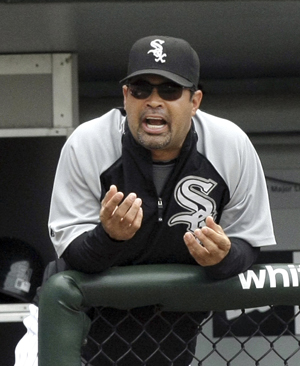
Chicago White Sox manager Ozzie Guillen was the voice of reason in the Joe Cowley controversy? Weird.
Last Thursday the Toronto sports blogosphere was aflame with controversy over a web article written by Chicaco Sun-Times beat reporter Joe Cowley titled “No, Canada, for MLB”. In short, it was about how the Blue Jays are a moribund franchise that should be moved.
As a Torontonian - born and bred -I had a very strong, knee-jerk reaction to reading this. After all, who is this guy? I don’t know him from Adam. Doesn’t he know that we’re the centre of the universe?
Reading Cowley’s Wikipedia profile did little to mitigate my rage. I mean, who wouldn’t be inflamed when he “protests” Canada by refusing to stand during the national anthem? The two incidents make him appear ignorant and ethno-centric.
However, after a day or two of reflection I calmed down. After all, Cowley clearly didn’t know what he was talking about. He was probably just trying to get a reaction from loyal Blue Jays fans.
This morning, Cowley appeared on the Fan 590’s Big Early with Don Landry and Gord Stelleck where he defended himself admirably, pointing out that his infamous remark that Toronto was “nothing but a city in a third-world country” was taken out of context.
However, Cowley stuck to his guns and reiterated his belief that the Blue Jays should be moved. He re-stated his beliefs that Venezuela deserves a team and that, aside from political reasons, it would work in Caracas, the capital of the country.
Cowley had addressed this idea in his article, with supporting quotes from White Sox manager Ozzie Guillen and pitcher Freddy Garcia. Both Venezuelans spoke about how popular a team would be in Caracas.
That’s entirely fair comment. It would be popular. Economically viable? No. Politically possible? No. Safe? Not even a little. But boy, there would be crowds.
Ask any Winnipeg Jets supporter – drawing a crowd isn’t enough. You need the backing of a strong business community. Caracas lacks that kind of legitimate financial support.
Also, let’s consider who he asked – two proud nationalists who, as fans, would undoubtedly love to see a major league team in their country. I can entirely sympathize. As a Canadian I love having a Major League Baseball franchise in my country, and am sorry that Montreal lost the Expos.
Hell, if my heart had its way every major Canadian city would be represented in the National Hockey League and MLB. It just isn’t a realistic desire.
It’s worth noting that neither Guillen or Garcia said that the Jays should be moved there or that the Toronto franchise should be moved at all. They just said that they’d like a team in Venezuela.
Guillen did speak about how the dwindling fan support, compared to the Jays dynasty of the early 1990s, is a sad state of affairs. Again, I agree. It is sad. But the White Sox manager never explicitly said that the team should be folded or relocated. He was just commenting on the rather pathetic attendance figures.
As for Rios’ and his claim that “There's that small group of diehards, but it’s hockey, hockey, hockey. It’s gotten sad here. They just don’t really care.” It’s hard to believe that he doesn’t have some resentment toward Toronto after he was put on waivers by the Blue Jays last season.
Jays fans certainly don’t like him: he had been booed during each of his at-bats over the course of the four-game series.
At the end of the day, I think Cowley’s article reads like a combination of someone with an agenda to push and someone looking for some cheap heat, trying to get a rise out of a beleaguered fan base to generate some hits for his web presence.
In all honesty, I’m sorry to have wasted 639 words on this “news”. Cowley’s already gotten enough attention for his ill-considered article.
